Legend Of Onam
Facts and fables blend as Kerala celebrates this royal return, year after year with the festivities of Onam. Legend has it that the gods plotted against Mahabali to end his reign. For this they sent Lord Vishnu to earth in the form of a dwarf Brahmin. [Read the full story] But before being trampled down to the netherworld, Vishnu granted the king’s sole wish: To visit his land and people once every year.

Story goes that during the reign of mighty asura (demon) king, Mahabali, Kerala witnessed its golden era. Every body in the state was happy and prosperous and king was highly regarded by his subjects. Apart from all his virtues, Mahabali had one shortcoming. He was egoistic. This weakness in Mahabali’s character was utilized by Gods to bring an end to his reign as they felt challenged by Mahabali’s growing popularity. However, for all the good deed done by Mahabali, God granted him a boon that he could annually visit his people with whom he was so attached.
Onam is the most important festival in Kerala and people of Kerala start preparing for Onam days ahead. Although the festivities for Onam last for ten days the two most important days of the festival are the first day and the last or the tenth day.
The first day or Atham is considered as an auspicious day by the people of Kerala as it marks the beginning of Onam. The most important feature of this day is the making of pookalam (floral carpet) which is made by the girls of the house while the boys gather fresh flowers required to make a pookalam.
The pookalam is made in order to welcome the spirit of King Mahabali in whose honour the festival of Onam is celebrated. Everyday fresh flowers are added to the pookalam design resulting in a huge flower carpet on the tenth day.
After offering their morning prayers people sit down to enjoy the scrumptious breakfast of steamed bananas and fried pappadam. This is a fixed breakfast during the ten days of Onam festivities.
Thiruonam or the tenth day of Onam is considered as the big day when entire Kerala is decked up with fresh flowers and everyone wishes each other ‘Thiruonam Aashamsakal’ which translated means Onam wishes to everyone.
People make conical figures of sticky clay and paint them red. These figures are then decorated with rice-flour and water and then placed in the front courtyard and prominent places in the house.
The Grand Boat Race
One of the main attractions of Onam, is the ‘Vallamkali’ or boat races of Karuvatta, Payippad, Aranmula and Kottayam. Hundreds of oarsmen row traditional boats to the rhythm of drums and cymbals. These long graceful Snake Boats called ‘Chundans’ are named after their exceedingly long hulls and high sterns that resemble the raised hood of a cobra.
Then there are ‘Odis’, the small and swift raiding crafts adorned with gold tasseled silk umbrellas, the
‘Churulans’ with their elaborately curled prows and sterns, and the ‘Veppus’, a kind of cook-boat. This traditional village rivalry on watercrafts reminds one of ancient naval warfare.
Thousands throng the banks to cheer and watch the breathtaking show of muscle power, rowing skills and rapid rhythm. These boats – all pitted against their own kind – rip through the backwaters of Kerala in a tussle of speed.
Ball Games
Pantukali
The most popular outdoor game is Pantukali in which the ball is prepared by tying a few pebbles in the layers of dried-up plantain leaves with the help of a plantain or coconut fiber. The players are divided into two groups and a stick called ‘natta’ is planted at one end of the court. The court is basically an open space with lines drawn at to indicate the limit beyond which the ball should not be thrown. One party serves the ball and tries to hit the stick while others try to catch it. If the ball is caught then the man is out otherwise he gets another chance.
Kayyankali
Combats are usually of two kinds – those that are undertaken singly known as Kayyankali. It is a violent game and has all the risks of an ancient duel. However no weapons or horses are allowed. In this game there is a display of power. The participants fight one to one. This game is basically the display of power. There are fights, wounds, blood and even death at times.
Attakalam
Attakalam is another kind of combat which is comparatively less hazardous in nature compared to the Kayyankali. In this the game is not played individually rather the players are made to play into groups. A large circle is drawn on the plain sand floor and one group is placed inside the circle. A member of the second group tries to bring the former outside the circle and both are free to use force. However, once any member of the inside team steps of the circle, he is considered out. After all the members of a team are dragged out, the other team takes its position inside the circle. If a member of any team cannot be driven out, his party is declared victorious.
Ambeyyal
Ambeyyal is actually the game of ‘archery’. In this game, two groups of young men shoot blunted arrows at each other. It is a game to test the patience, skill and persistence of the players. However, since the arrows are strong and are delivered with force, they still manage to hurt many. The bows are made of about 18-inch long bamboo. There is a mark in the form of a little stick called ‘cheppu’ and those who hit this mark are allowed to carry all the arrows lying on the ground for their team.
Kutukutu
Popularly known as Kabbaddi in rest of India, Kutukutu is a simple group game. In this game, there are two teams with eight players each. It is played in a rectangular court which is divided into two halves, one for each team. One man from one group advances from the middle line towards the opponent’s area uttering ‘Kutu Kutu’ in one continuous breath and try to touch the opponents and run back to the central line without being caught. However, if he is physically caught and is out of breath before touching the central line, he is out of the game.

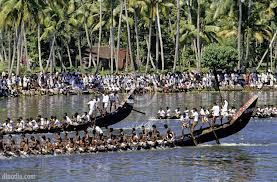
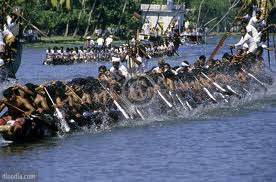
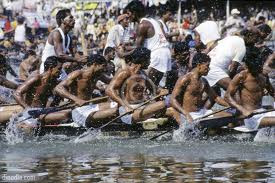
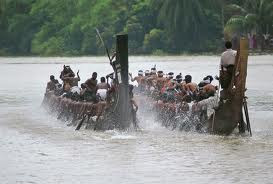

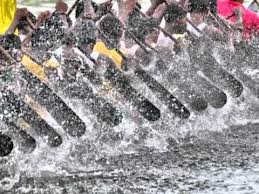






Leave a Reply